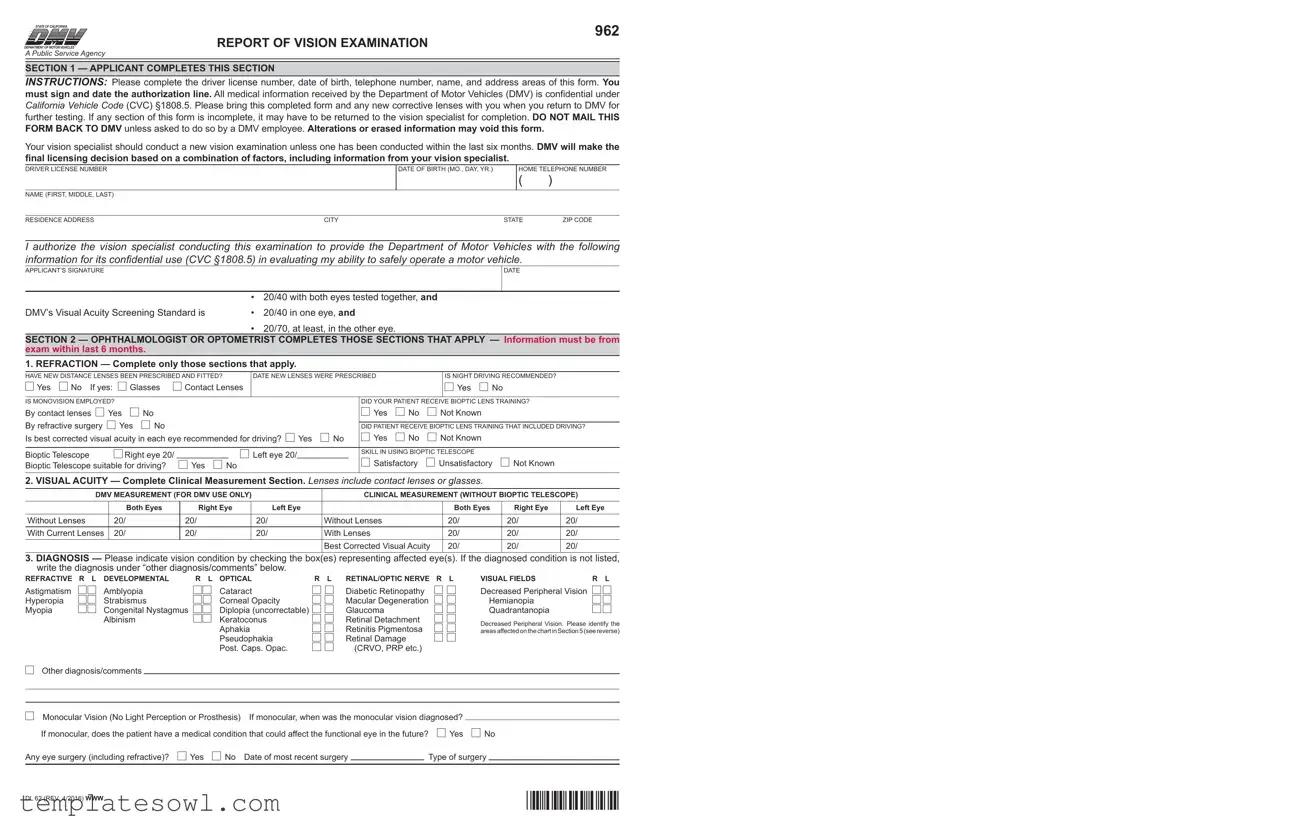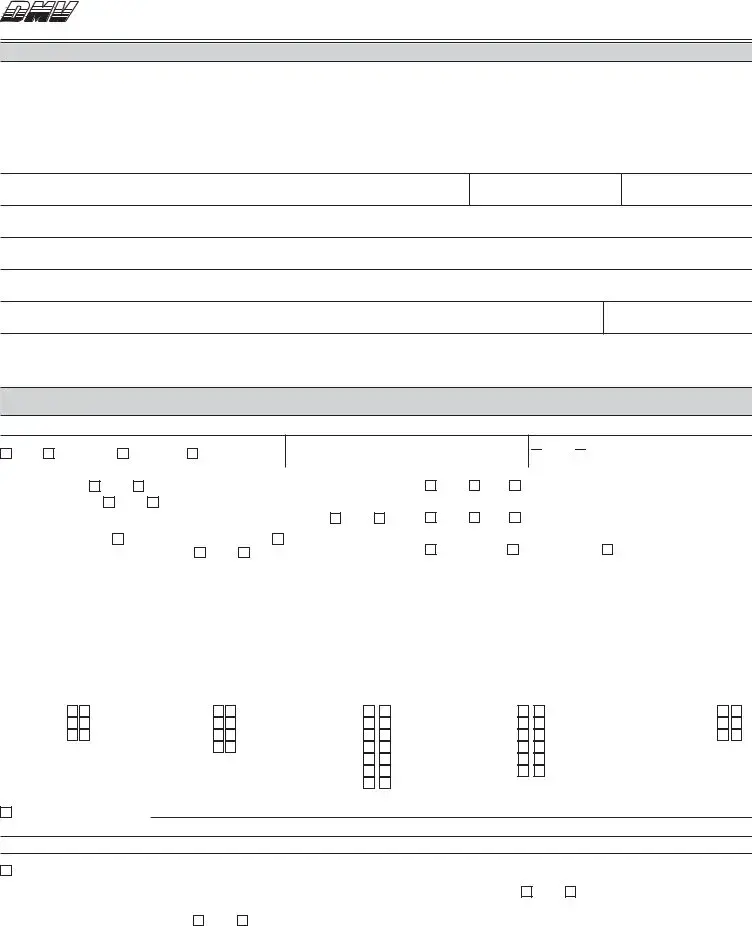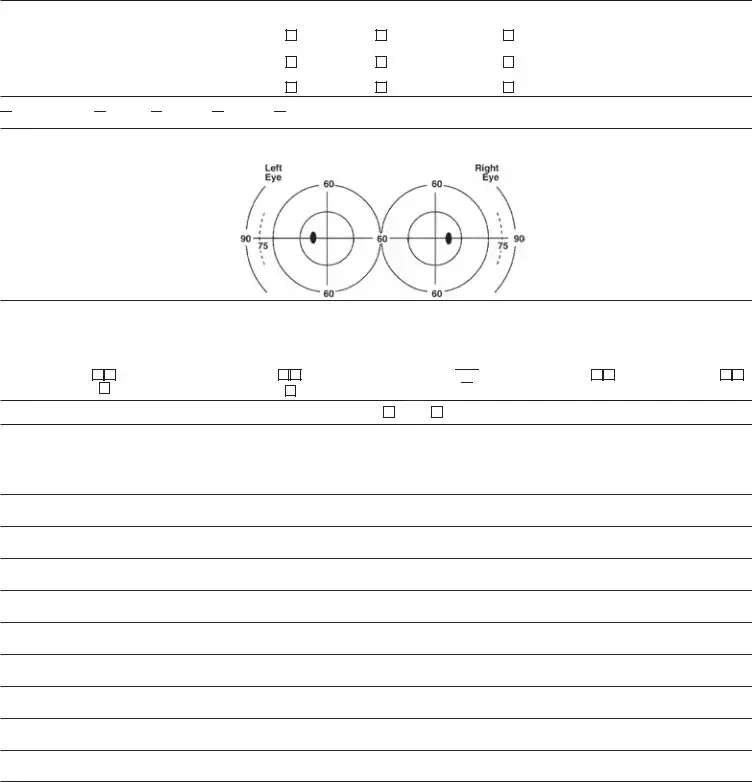What is the DMV Vision form?
The DMV Vision form is a document required by the California Department of Motor Vehicles (DMV) that certifies an applicant’s vision. It includes sections for the applicant to fill out personal information and for a vision specialist to report on the results of a vision examination. The form helps assess whether individuals meet the visual standards needed to safely operate a motor vehicle.
Who needs to complete the DMV Vision form?
How do I fill out the applicant's section on the form?
To fill out the applicant's section, provide your driver license number, date of birth, name, address, and telephone number. Ensure that all information is accurate and legible. Sign and date the authorization line to allow the vision specialist to share your information with the DMV.
What information does the vision specialist provide?
The vision specialist completes sections of the form that detail the results of your eye exam. This includes visual acuity measurements, any prescriptions for corrective lenses, recommendations for night driving, and any diagnosed conditions affecting vision. It also requires professional input on whether your visual capabilities are adequate for safe driving.
How recent must the vision examination be?
The vision examination must have been conducted within the last six months. This ensures that the DMV has current information about your vision abilities when considering your application.
What should I do if I wear corrective lenses?
If you wear corrective lenses, bring them with you when returning to the DMV. The form will ask about new lenses, and you'll need to indicate if you're using glasses or contact lenses. It’s important that your vision is assessed with your corrective lenses during the examination.
Can I mail the DMV Vision form?
Generally, you should not mail the DMV Vision form back to the DMV. You must bring it in person unless specifically instructed by a DMV employee to send it by mail. If the form is incomplete, the DMV may return it to the vision specialist for completion.
What happens if the form is incomplete?
If any section of the form is filled out incorrectly or left incomplete, the DMV may return it to the vision specialist for correction. It’s crucial to ensure that all sections are fully and accurately completed before submission to avoid delays.
Are there any potential consequences of falsifying information on this form?
Providing false information on the DMV Vision form can lead to serious consequences. This may include a denial of your application, suspension of your driver's license, or even legal repercussions. It is essential to be truthful about your vision and medical history.
How does the DMV use the information from the Vision form?
The DMV uses the information provided by the vision specialist, along with data from the applicant, to make a decision regarding licensing. The assessment helps ensure that all drivers meet safety standards on the road, considering their visual capabilities.



 Yes
Yes  No
No

 Not applicable
Not applicable  1 year
1 year 
 2 years
2 years  5 years
5 years 
 Other
Other
 Abnormal Eye Movements
Abnormal Eye Movements 
